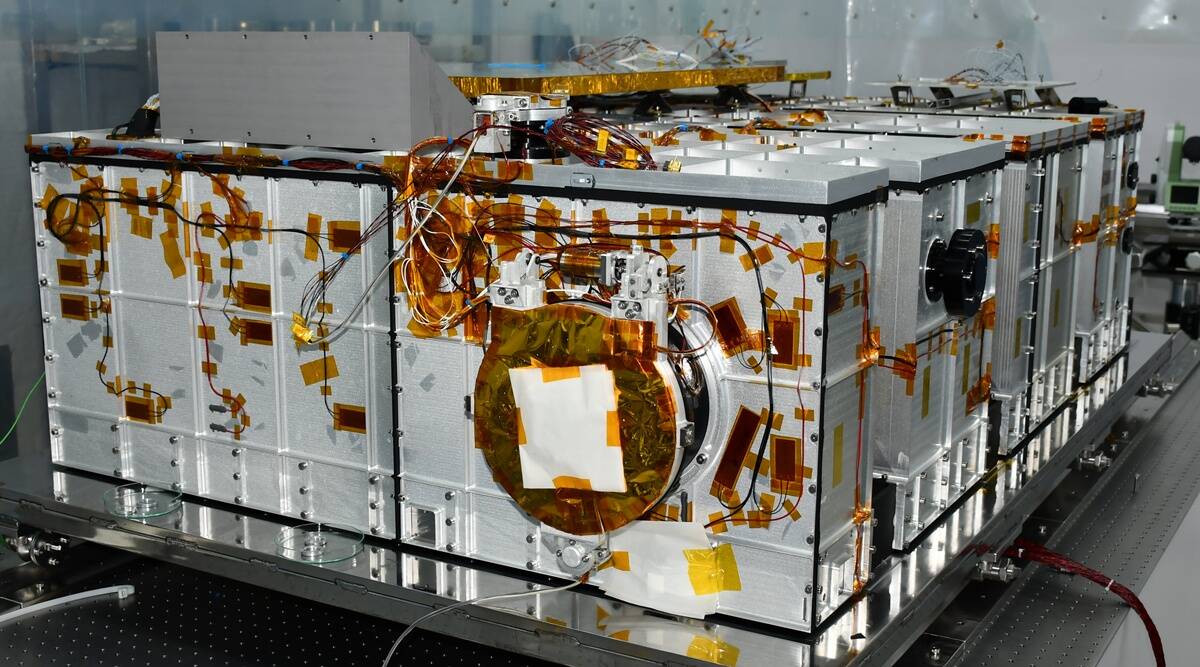The nation’s first solar mission will likely be launched between June and July.

Thursday, the Indian Institute of Astrophysics in Bengaluru transferred the primary payload of the nation’s maiden trip to the sun to the Indian Space Research Organisation (ISRO) for integration with the other payloads aboard the satellite.
The Aditya-L1 mission, which will examine the sun from a distance of 1.5 million kilometres from Earth, is expected to be launched in June or July of this year, after being repeatedly delayed by the epidemic.
ISRO chairman S. Somanath announced at a ceremony on Thursday when he was presented with a 3D model of the satellite’s cargo that it will be launched by India’s reliable rocket Polar Satellite Launch Vehicle.
It took 15 years to build due to the complexity of the chronograph and what it was striving to do, according to him. He stated that a 50-year plan for scientific investigations and missions was necessary. Also, he said, Indian scientists must come up with innovative concepts that have not been attempted by other nations, such as projects that may appear unachievable or never receive permission.
“ISRO aspires to play a significant role in future space research missions, necessitating the development of an ecosystem and a road map,” he stated.
The ‘Visible Emission Line Coronograph’ (VELC) payload delivered on Thursday will be the primary payload among seven meant to research various features of the sun, including its atmosphere, solar wind acceleration, and the formation of coronal mass ejection. The satellite will go to the L1 or Lagrange point between the sun and the earth in order to obtain an uninterrupted view of the sun. Lagrange points, of which there are five between any two celestial bodies, are referred regarded as parking places in space because the gravitational attraction of the celestial bodies is equivalent to the force required to keep the body in orbit. Consequently, a satellite can remain in Lagrange positions between any two celestial bodies without burning fuel.
The VELC, which was conceived and constructed in 15 years, may help solve one of the central mysteries of solar astrophysics: why the sun’s atmosphere, known as the corona, is a million degrees hotter than its surface, which is just 5,700 degrees Celsius.
To accomplish this, astronomers must examine the corona from its base upwards, which is challenging due to the intense light flowing from the sun’s surface.
However, VELC contains a “internal occulter” that isolates and discards light from the surface. The leftover coronal light is transferred for additional processing. The VELC weighs 90kg and has dimensions of 1.7m x 1.1m x 700mm.
The VELC can scan the solar corona as close as 1.05 solar radii, which is the closest any similar payload has ever observed. Additionally, it can make these observations around three times per second with a resolution of 2.5 arcseconds per pixel.
“No other solar coronagraph in space is capable of imaging the solar corona so near to the solar disc as VELC. It can capture images as close as 1.05 solar radii away. It can also perform imaging, spectroscopy, and polarimetry simultaneously, and it can capture measurements at a very high resolution and several times per second, according to Prof. Raghavendra, VELC’s chief investigator.
It will aid in the study of the corona’s temperature, velocity, and density, provide insight into the processes that lead to the heating of the corona and acceleration of the solar wind, contribute to research on the causes of space weather, measure the magnetic field of the corona, and investigate the origin and development of coronal mass ejections.
Not only will it produce high-resolution images of the corona, but it will also maintain a temperature of 22 degrees Celsius by reflecting away the immense sun surface heat and light. It is also one of the most exact instruments created in India.
Nigar Shaji, programme director of Aditya L1, commended LEOS of ISRO for manufacturing the primary mirror and 18 distinct optical assemblies for VELC. She stated that the main mirror has been polished to an accuracy of approximately 4 ansgtroms, which is among the best in the nation.
Prof. B Raghavendra Prasad, the main investigator of the VELC payload, explained that the logo is a photograph of the solar corona taken by British and Indian astronomers at the Kodaikanal Solar Observatory 125 years ago.



